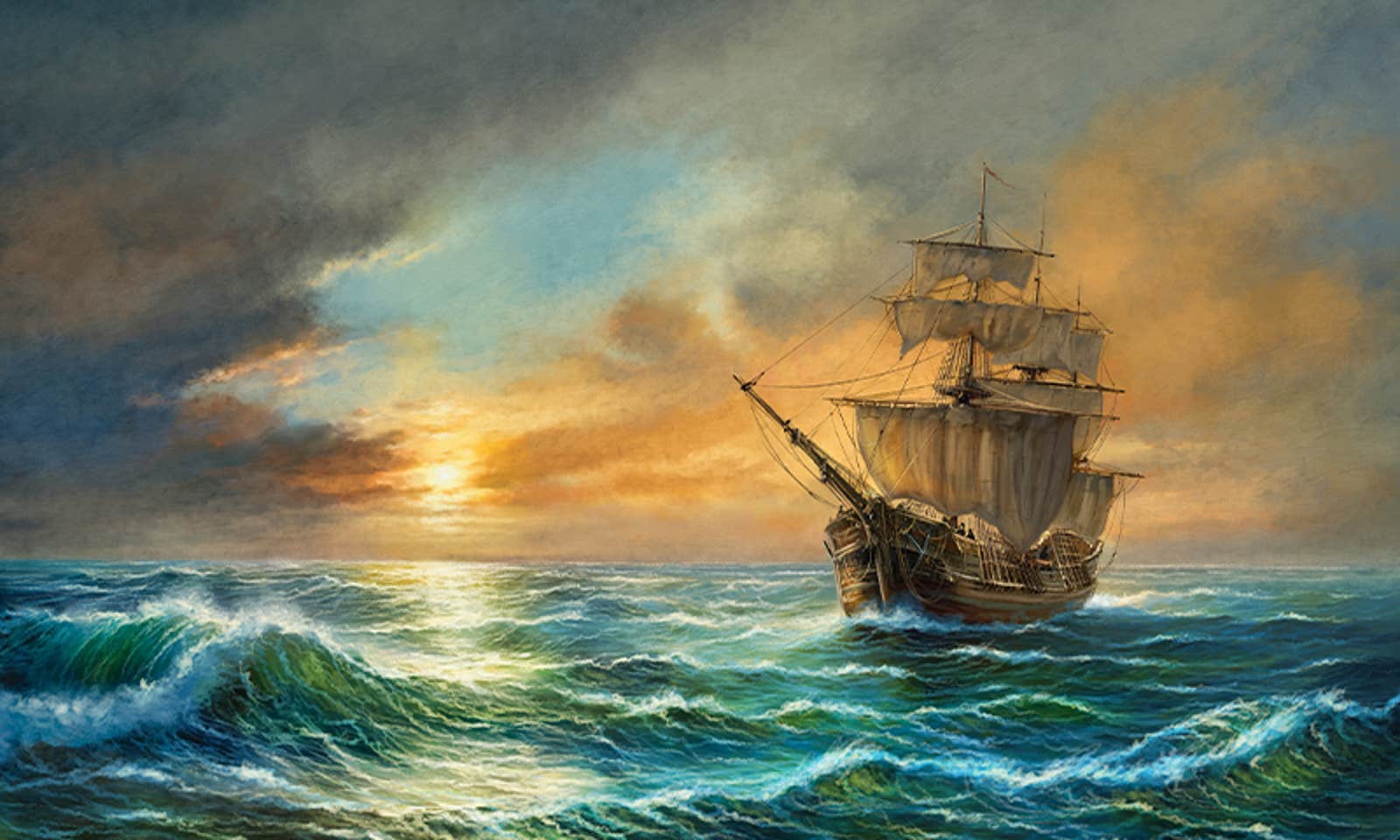Cramped, damp, filthy, infested with rats and disease. This was the reality aboard transoceanic ships in the 15th century. According to most historical accounts, such ships were akin to biological weapons, dropping disease onto the virgin shores and soils of the Americas like bombs, and unleashing plagues that instantly spread like wildfire and made the rapid demise of millions of Indigenous people inevitable.
This narrative, often called the “virgin-soil epidemics” thesis, was popularized by Jared Diamond in his Pulitzer-prize winning book, Guns, Germs, and Steel, published in 1997. But an alternate historical narrative has been gathering momentum in recent years.
Digging into archaeological and other records, some researchers have begun to show that infectious diseases, such as smallpox and measles, took centuries, not decades, to infect populations in the Americas, who had not previously been exposed. They also contend that warfare, extermination of animals relied on for meat and fur, and other factors played an equal or larger role in the devastation of Indigenous populations. For example, Pueblo nations of the Southwest didn’t experience precipitous declines until about a century after Spanish invasion, in the mid 16th century, recent archaeological evidence suggests.
Now, Elizabeth Blackmore, a Ph.D. student at Yale University, has lent mathematical rigor to the argument that European diseases were slower to spread than we thought. Blackmore combined historical data about the people and ships crossing the ocean with modern epidemiological tools to build better models of how diseases infected people on ships and land. “People always say that ships carry diseases, like the diseases are cargo sitting in a box, but they’re not,” Blackmore says.
The key question of Blackmore’s analysis was: Could some pathogens have run out of susceptible hosts and gone extinct during a transoceanic voyage? In the age before steam power, when ships relied on wind, and trips routinely lasted months instead of weeks, the answer she found was, yes.
People always say that ships carry diseases, like the diseases are cargo sitting in a box, but they’re not.
Whether a pathogen persisted on board a ship in the 1400s depended on numerous factors: the proportion of susceptible people on a ship, the speed at which people became infected and either recovered or perished, the length of time recovered people were immune to reinfection, and the rate of transmission from infected to susceptible. Blackmore plugged all these factors into her model. Her findings help to explain why widespread outbreaks weren’t, in fact, inevitable or immediate when the first ships of European explorers arrived on the coasts of North and South America.
For instance, smallpox and measles were long thought to have spread rapidly through the Americas after Europeans’ first contact, because they are diseases with high transmission rates. But it’s an idea that is based on little evidence, says Blackmore. She became interested in modeling disease spread after learning that smallpox and measles didn’t arrive in California until the early 1800s, long after she had thought. In fact, according to environmental historian John McNeill at Georgetown University, “there was no big smallpox outbreak [in the Americas] until 1518, and none of measles until 1531-32,” roughly 25 and 40 years after Columbus first arrived.
As Blackmore’s model shows, during early transoceanic travel, such as when Columbus sailed, these viruses likely burned through available hosts at sea before getting the chance to ignite plagues on land. Even as late as the 1800s, Boston, an important port city, still didn’t suffer frequent or sustained outbreaks of smallpox and measles. “Boston had like 20- and 30-year gaps between smallpox and measles outbreaks throughout the whole of the 1800s,” says Blackmore.
Blackmore’s analysis also shows how important steam power was to the spread of disease. Steam ships, arriving in the 17th century, gave pathogens a better chance to survive the trip by increasing the numbers of hosts on board and reducing travel times. It also increased the frequency of transoceanic crossings and therefore the probability that a ship with a live infection would come to port. McNeill says that this is not a totally new idea but Blackmore’s work provides the first model for how this might work aboard a ship.
The shift in thinking about ships as populations of people more or less susceptible to infection, not just disease in a bottle, could allow historians and researchers to explore previously unconsidered nuances of historical pathogen spread. For example, McNeill says the reduced cost of travel afforded by steam ships also brought new populations on board who likely had little to no previous immunity. Ships with crews of professional sailors probably had a lower proportion of people who were susceptible to infection, McNeill says, “because professional sailors are ricocheting around from port city to port city, and port cities are aswirl with infections.” The same was likely not true for emigrants from isolated villages who, in the age of steam, could now afford the journey.
Blackmore believes re-examining the past could inform modern battles with disease, too—even the spread of pathogens into space. “Spaceships are ships, and I think the same principles apply,” she says. The conditions on board, the demographics of the travelers, where they are from, the flora and fauna on board, and the duration of travel: These are all factors that will dictate which pathogens may survive interplanetary travel, and should be ones we monitor as humans begin to journey into space. ![]()
Lead image: Yarikart / Shutterstock




























